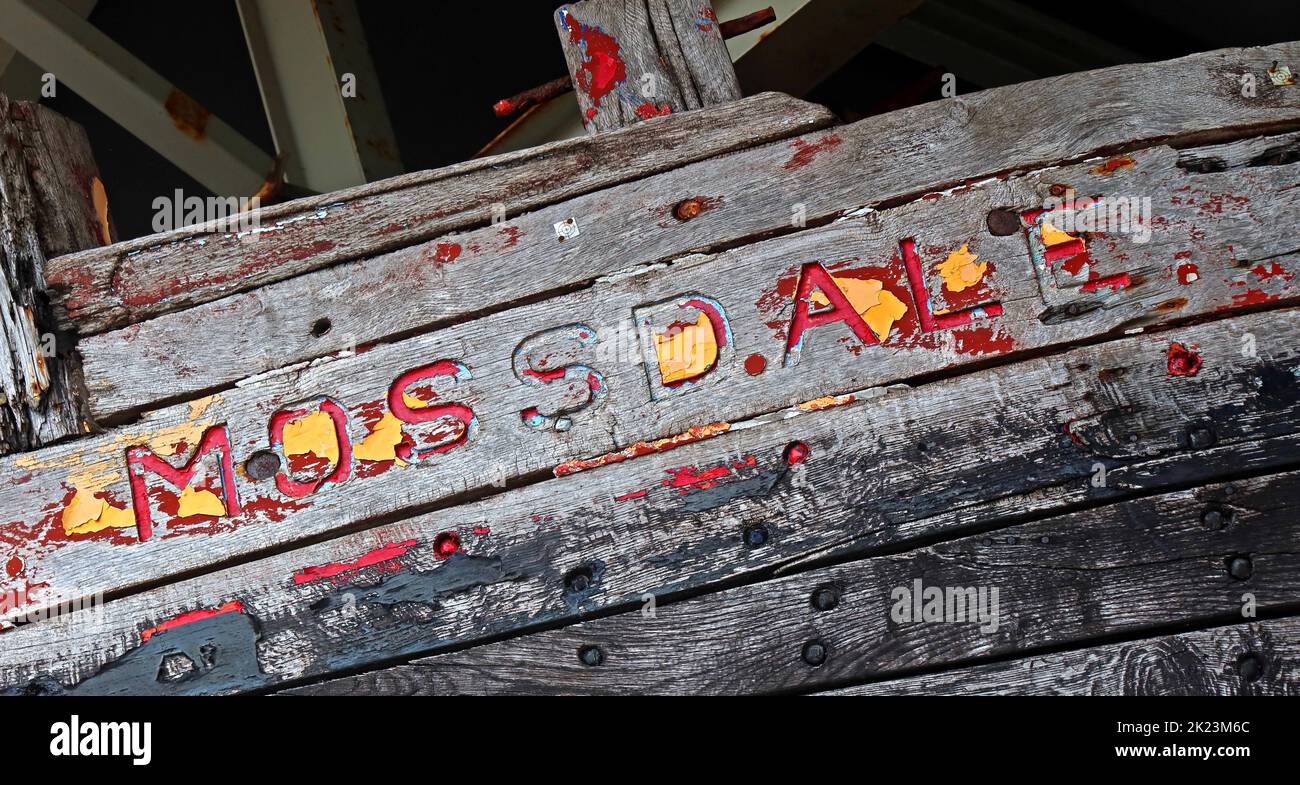Liverpool boat launched as Ruby built 1860 by William Speakman Chester, now named Mossdale being restored, used by Abel & Sons of Runcorn

Image details
Contributor:
Tony Smith / Alamy Stock PhotoImage ID:
2K23M6CFile size:
45.8 MB (3.3 MB Compressed download)Releases:
Model - no | Property - noDo I need a release?Dimensions:
5472 x 2928 px | 46.3 x 24.8 cm | 18.2 x 9.8 inches | 300dpiDate taken:
14 September 2022Location:
National Waterways Museum, South Pier Road, Ellesmere Port, Cheshire, England, UK, CH65 4FWMore information:
Mossdale was built in 1876 by the Shropshire Union Railway & Canal Company, Chester. She is a Mersey Flat and was towed by horses or tugs. Her hull was carvel construction of oak, elm and pitch pine and she traded between Ellesmere Port and Liverpool. Originally known as RUBY, she was renamed MOSSDALE when bought by Abel & Son of Runcorn in the 1930s. They extensively rebuilt and deepened her to obtain maximum load for minimum displacement. She was found abandoned at Ellesmere Port in 1970 and is now preserved on shore at the Boat Museum, Ellesmere Port. Mossdale’s fabric is representative of a typical wooden Mersey flat, being built of oak frames on pitch pine planking doubled where necessary to achieve her shape. Her large foredeck windlass fitted her to work in the tidal Mersey, with a smaller windlass used when warping her into docks. In 1933, Mossdale underwent a major re-build which included lengthening her to 72 feet. Her increased length represents an important period in her working life, marking the development in trade caused by the industrial revolution and the need for her to carry a greater cargo to pay her way. With no means of propulsion, she would generally have been towed by a horse or tug. Mossdale was never rigged as a sailing flat, but is a good example of a regional river barge from North-West England. She has a substantial rudder, a typical flat bottom, a round bilge and bluff square bows.